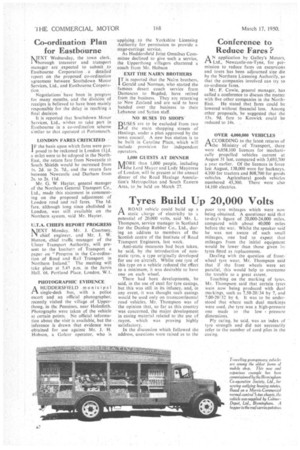Tyres Build Up 20,000 Volts
Page 36

If you've noticed an error in this article please click here to report it so we can fix it.
A ROAD yehic?e could build up a static charge of electricity to a
potential of 20.000 volts. said Mr. L. Thompson, service manager in Scotland for the Dunlop Rubber Co., Ltd., during an address to members of the Scottish centre of the Institute of Road Transport Engineers, last week.
Anti-static measures had been taken, he said, by the introduction of nonstatic tyres, a type originally developed for use on aircraft. Whilst one tyre of this type on a vehicle reduced the effect to a minimum, it was desirable to have one on each wheel.
There had been developments, he said, in the use of steel for tyre castings, but this was still in its infancy, .and, in any event,it was thought such casings would be used only on transcontinental road vehicles. Mr. Thompson was of the opinion that, so far as this country was concerned, the major development in casing material related to the use of rayon, which was proving highly satisfactory.
In the discussion which followed the address, questions were raised as to the poor tyre mileages which were now being obtained. A questioner said that to-day's figure of 20,000-24.000 miles. compared with about 40.000 miles before the war. Whilst the speaker said he was not aware of such small mileages, one had to expect that mileages from the initial equipment would be lower than those given by tyres fitted as replacements.
Dealing with the question of frontwheel tyre wear, Mr. Thompson said that if the front wheels were set parallel, this would help to overcome the trouble to a great extent.
Touching on the marking of tyres, Mr. Thompson said that certain tyres were now being produced with dual Markings, such as 7.50-20/34 by 7, and 7.00-20132 by 6. It was to be understood that where such dual markings were used, the tyre was a high-pressure one made to the low pressure dimensions.
Ply rating, he said, was an index of tyre strength and did not necessarily refer to the number of cord plies in the casing.




























































































